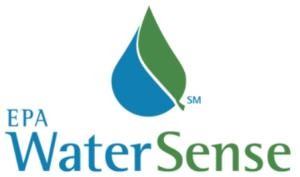After gaining Energy Star labeling for certain pumps, the industry has set its sights on a similar initiative for pool covers. WaterSense, a program from the U.S. Environmental Protection Agency, provides a similar designation on products that assist with water conservation.
To begin the process, EPA must include covers in its program. Currently, the WaterSense designation is reserved for toilets, showerheads, irrigation controllers, urinals and pre-rinse spray valves that meet certain criteria.
APSP’s Water Conservation Coalition hired a lobbyist to help pool covers make the list, and the group will go to Washington, D.C., to garner support March 18-19.
“The folks representing probably 70- to 80 percent of the pool-cover manufacturers are coming to town,” said Carl Chidlow, principal of Winning Strategies, the Washington-based lobbyist hired by APSP.
The coalition will meet with EPA staff and visit Capitol Hill, focusing on lawmakers representing states where cover manufacturers are located and, therefore, whose economies benefit from the industry.
It may be a one- or two-year process to get covers included in the WaterSense program, just as it was with pool pumps and Energy Star. While Chidlow has already opened a dialogue with the EPA, the coalition seeks the support of legislators who can help nudge the process if things come to a standstill. “We want to try to get several [legislators] from both sides of the aisle who are educated on the issue,” he said.
Covers were considered a good place to start because of the relatively large investment they require. They can cost as much as $8,000 to $10,000, but if consumers see they can save money, they may be more inclined to open their wallets. “We want to explain to them that adding in a pool cover can save thousands of dollars and pay the customer back in a relatively short time horizon,” Chidlow said.
It isn’t yet known which parameters the Water Conservation Coalition will encourage as part of the qualification process. But whatever the requirements, third-party testing will be required for certification.
Chidlow said these efforts go beyond pool covers. Later, the group may seek similar labeling for other water-conserving products. And it wants to prepare for regulation down the road.
“Over time, we’re going to see federal legislation on water conservation,” he said. “If you don’t have a seat at the table, you often end up on the menu. So we want to establish a seat at the table for the industry, and the cover manufacturers are showing some leadership.”
APSP’s Energy Coalition will make a similar trip the next week to build on support it has. It seeks to undo damage caused by a law offering tax credits for using energy-efficient products, but prohibited pool-related items from being included. The Energy Coalition has successfully lobbied to remove the exclusionary language from an update of the law, but members want to educate more officials to ensure the change stays in place.
“We want to continue to expand our coalition and make sure we build relationships … and we’re not just coming at people when we have concerns or we’re backed against the wall,” Chidlow said. “We want to be proactive.”



